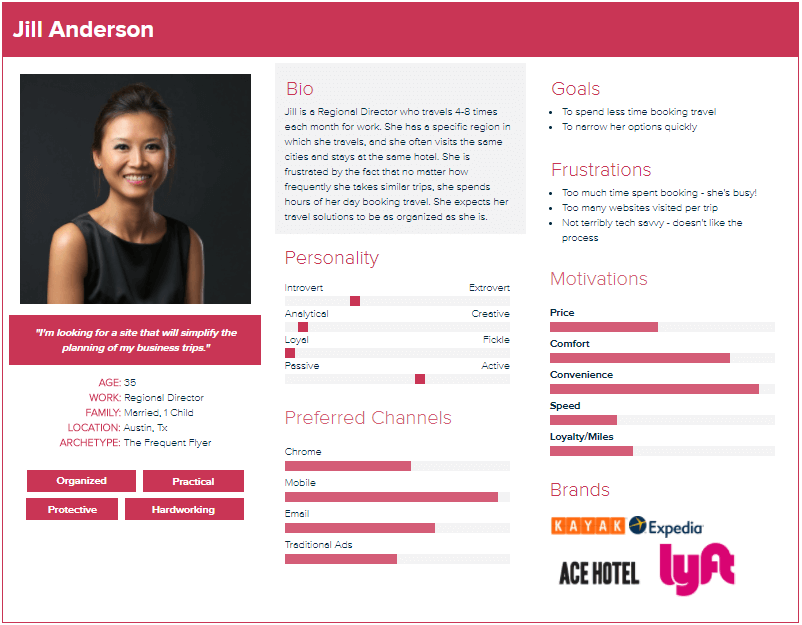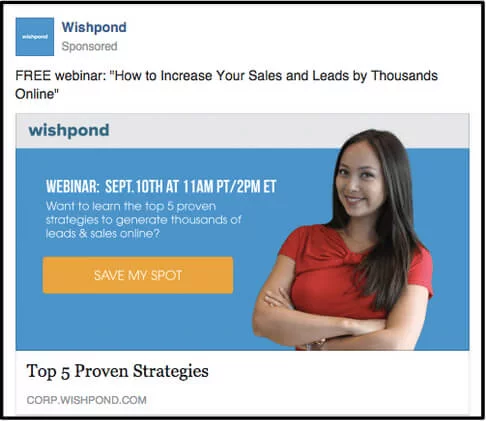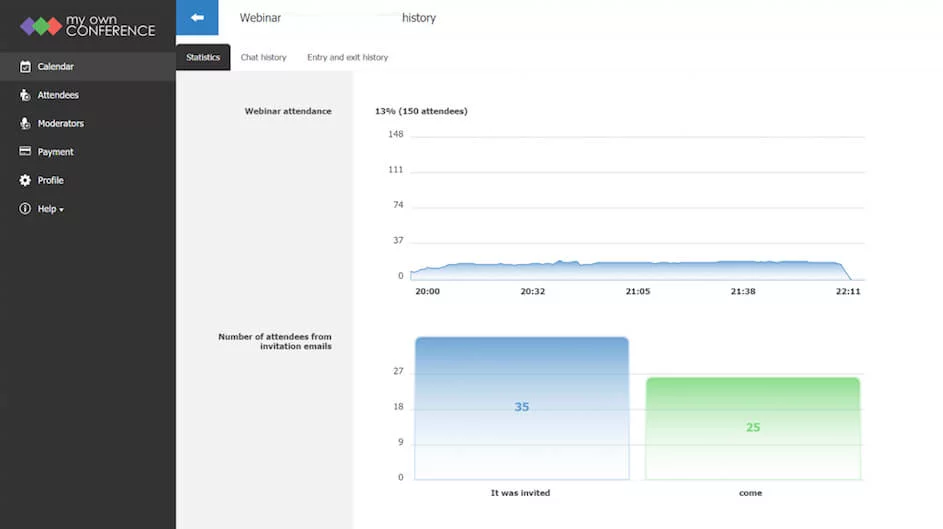
This time we have decided to speak on webinar promotion. Because of the inexhaustible stream of information and diversity of online events, not only paid events should be advertised but the free ones, too. This post will offer a step-by-step algorithm on how to advertise webinars.
6 Promotion Steps for Webinars Advertising
Summarize with
Step 1. Defining the Target Audience
You have to do a thorough research of your audience to create a webinar campaign that works. There are two most important things to account for:
1. Demographics
What is your audience’s age? While a difference in a couple of years hardly matters, a generational gap of 20 years is definitely more pronounced. Knowing your audience’s age will help you select a message, jokes, references that truly resonate.
What is their location? This question will help you schedule your ads and webinar itself at the times when they are most likely to be viewed.
What is their nationality? This one is different from location, since your webinar may target immigrants and expats rather than locals. In this case, you may want to run your webinar in the audience’s dominant language or at least localize your ads.
What is their life stage? This one is broad and includes things like current occupation, marital status, children, university enrollment.
A good example of a customer persona:

Here it’s important to test your assumptions. Just because your audience is mostly college students doesn’t mean they are in their 20s. A webinar topic that deals with getting education while being a full-time employee is more likely to attract an older audience.
What is their level of education? A webinar on a complex engineering topic should target audience with advanced tech degrees rather than high school graduates.
You do not need to consider every single aspect of demographics when constructing your marketing campaign. Always keep in mind your webinar topic. For example, if you hold an event on retirement ideas, your audience’s age is a more important factor than their gender.
2. Motivation
Think of what your audience is dealing with or the problems it encounters.
The more thoroughly you can describe your target audience’s motivation, their problems and needs, the easier it will be for you to attract it to the webinar.
Here is how you can learn more about your audience’s motivation:
- Analytics systems like Google Analytics, Twitter Analytics, Facebook Audience Insights, etc.
These services allow you to track your potential participants’ activities, interests, and behavioral patterns and are most helpful when you already have a following. Consider what posts (status updates, pictures, videos) got the most likes. What CTAs got the most clicks? What articles generated the most comments? These small insights will help you build a webinar advertising strategy that brings results.
- Groups on social media.
Websites such as Reddit and Quora can also help identify the audience’s pain points.
Communication with existing clients, aka their feedback, survey, and poll answers.
Collecting all that demographic and behavioral information will help you construct a customer persona — a typical representative of your target audience.
Step 2. Finding Platforms Your Target Audience Visits
List the websites, forums, mobile apps, resources, blogs, and social network groups your webinar’s potential participants use. Try to make this list include as many sources as possible.
Now that the list is ready, could you direct all your resources to them? Free webinar promotion services exist, but if the target audience is not there, they offer you zero efficiency.
As a result, wasting resources and getting 1 – 2 registrations are not what you are after. The best practice would be to direct your resources and time onto the channels with the maximum relevance.
Look where your competitors direct most of their resources. For instance, recruiting webinar ads can primarily be found on LinkedIn, while fitness webinars, being more visual, naturally steer towards Instagram.
Create social media profiles on all platforms and see where you get the most responses. You may also survey your subscribers to find out what platforms they use the most.
Check out how to promote your event on Facebook and Instagram.
Searching for generational patterns is also a good idea. For example, Twitter’s audience tends to be in an older demographic compared to Instagram.
Step 3. Deciding on Budget
Different channels require different costs. For example, content marketing will be practically costless but more time-consuming. Banner advertisements could bring results practically immediately, but the usual cost is far from cheap.
When deciding on your budget, do remember that a webinar is usually attended by 30% to 40% of the pre-registered users. This is why it is necessary to make the webinar attract three times as many participants as you expect to see in the webinar room on the day it is held.
Newbie webinar creators would sometimes make a mistake of investing in advertising only at a webinar discovery stage. However, once you get your leads, it’s important to ensure they show up for the event and become your continuous viewers/customers.
Additional discounts, coupons, and other perks should be a regular part of your advertising budget if you want to convert your leads into loyal clients.
Step 4. Creating Banners and Advertisement Texts
If this is the first time you place an advertisement, it would be a great idea to spend a couple of hours studying requirements different platforms put forward to the banners.
For example, Google would not allow you using trademarks in the advertisement text. Being aware of these nuances will be helpful for you in saving both your time and your money.
In addition to banners, you will need a webinar landing page that lists the main benefits of your events and encourages people to register.
While a banner is a visual means of advertising, a landing page is more dependent upon solid copy. Keep the webinar description short but exhaustive.
You want to avoid bulky paragraphs, but having a bullet list of benefits is still a must. If your webinar focuses on one central benefit — that makes your job even easier.
It’s important to instill emotion in the landing page content. For example, talking about the programming webinar, you may describe how good it will feel to have a financially stable and rewarding career instead of purely focusing on the event’s core features.
Step 5. Starting webinar advertising
The main peculiarity of webinar promotion is the time limit. A good idea would be to start advertising a webinar 2 – 3 weeks before it is held.
If you plan to hold a video conference with the participation of several speakers, the promotion of such event format should better be started one month before the event. Usually, the moderation of your advertisements takes about 1 or 2 working days.
Example of webinar advertising:

Step 6. Analyzing, Summing up
Here are the things you need to analyze post-factum to become a better advertiser:
Clicks and registrations it has driven, aka lead generation
What channels brought the most registrations and attendees to your webinar? You can focus on those channels to further foster a relationship with your viewers.
While it’s important to understand why certain strategies succeeded, it’s even more important to understand why others failed.
Analyze what channels failed to attract leads and why. Was your landing page design outdated? Was it the poorly optimized website that turned off the potential viewers?
Knowing what worked and didn’t would help you better direct your advertising efforts in the future.
The engagement level of attracted attendees
It’s worth noting that it’s not all about the quantity but also the quality of your newly acquired viewership. Sometimes it’s better to acquire a handful of highly engaged and excited participants than a huge but dead audience.
Many webinar platforms allow you to measure how long your viewers stayed during the event, how many of them asked questions or participated in polls, what percentage made a purchase.

If those engagement metrics leave much to be desired, that can mean a couple of things: you didn’t target the right audience, your campaign was misleading, preparation — was subpar, etc. If the fault was misdirected or false advertising, you might want to mark that mistake and avoid it in future campaigns. You can comfortably calculate data on Excel spreadsheets. Figures will help you understand the channels most appropriate for your sphere and the directions to move forth.
An expert behind the simplified online meeting and webinar software platform, MyOwnConference. In today’s flexible work environment, Dan offers invaluable life hacks, in-depth reviews, and savvy tips for organizing, promoting, and excelling in virtual conferences and webinars.











